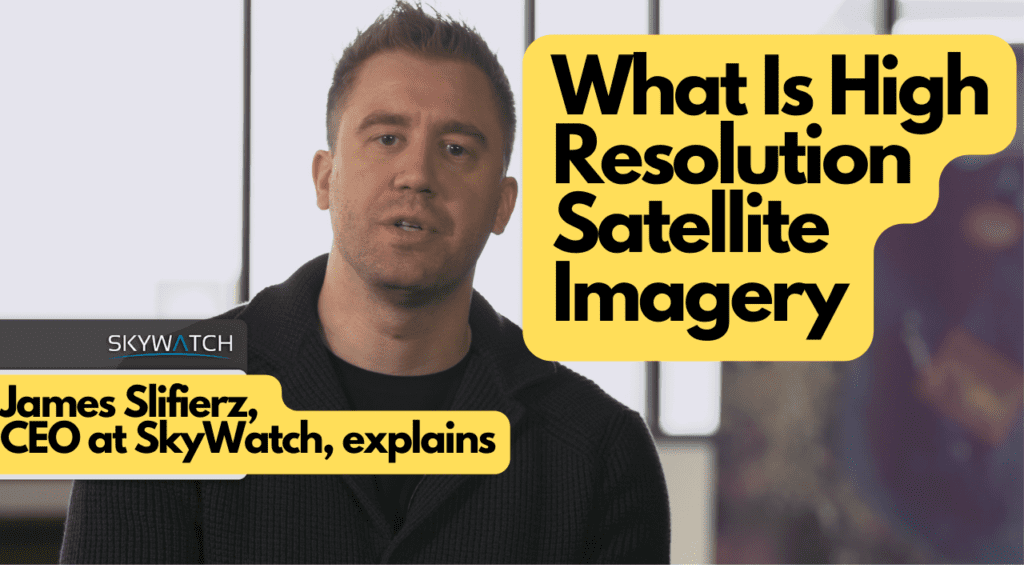
We Wanted To Open Up Access To Black Holes – using High Resolution Satellite Imagery
High Resolution Satellite Imagery is where we are now.
But SkyWatch was actually the original name of a piece of software that our founding team built for astrophysicists.
This software allowed astrophysicists to access data from Nasa’s space observatories in near real time. This allowed researchers to do follow up observations of very high energy events such as Black Boles, Pulsars, Magnetars, etc.
In 2014 while we were building this software, we realized that there were really no good software companies or interesting software startups in the space industry.
Until Then, It Was A Government Industry
The industry was at the beginning of its transition from being largely a government focused industry to one that was slowly but surely commercializing.
We saw an opportunity to build a leading software company in Earth Observation
This wasn’t about being first to build an API.
It was about turning Earth Observation into an end user application.
By 2015, our first project was to build a model that predicted crop yields based on that crop’s exposure to greenhouse-gas emissions.
We took data from satellites that were monitoring greenhouse gas emissions, as well as infrared sensors that were able to detect the crop of the health of crops. And we used that to build the model.
The most insightful part of this project was the fact that it took us about nine weeks to gather and collect the data we needed. And only about one week to build the actual model.
At that point, we realised the problem.
Even as experts in the satellite data realm, it was difficult for us to find and collect the necessary data.
And anyone who has never used satellite data before, was going to struggle.
The Data Is There: How Do We Make It Accessible AND Affordable?
We realized the real opportunity in Earth Observation was making this data easily accessible and affordable to all.
Imagine A World Without GPS?
It’s worth asking the question, why is it even important to make Earth Observation data accessible and affordable to all?
A lot of our inspiration came from the GPS industry.
20 years ago, people were very skeptical that GPS as a technology would be useful to any civilian outside of the military.
In fact, there was a big push to not make GPS signals accessible by civilians.
When GPS did become accessible to civilians, the largest market opportunity that was
identified at the time would be the sailboat navigation industry, at about $200 million per year. But something really interesting happened.
Many people who didn’t have access to this data before took these capabilities and built all sorts of interesting use cases and applications – applications that were never thought of by the original creators of the technology.
GPS all of a sudden became fairly standardized, accessible and affordable.
And because of that anybody in the world was able to easily build an application that leveraged its services.
Today, we likely wouldn’t be able to live our normal lives without it.
We use it to do things like navigate our way to our office, navigate our way home.
The stock exchange is dependent on GPS technology, using it to every single trade and transaction that happens on it.
And the very internet would not function without GPS technology.
As a result, the GPS industry grew from less than a billion dollars in 2000, to one that is approaching over $80 billion dollars per year today and one that supports trillions of dollars of products and services globally.
In fact, many of our businesses and many of our daily lives will be disrupted if GPS was not available to us today.
What Happened To GPS Will Happen With Earth Observation
Ee took a lot of those same principles and we identified that if we could apply those principles to Earth Observation.
At that time it was absolutely unaffordable, inaccessible and fairly fragmented.
We knew that, if we can turn that around and if we could make Earth Observation affordable, accessible and standardized, we could enable the existence of a very large market for the use of this data. With that, new applications, products and services would become possible.
And the world would come to rely on these services, as they do with GPS.
The Difference Between Government and Commercial Users
The government use case, is that it maps really large areas, at a fairly infrequent volume of time.
They need to map your country, your state, your city, on an annual basis.
When it comes to the commercial sector, it monitors very small areas e.g. a parking lot, a construction site or a farm.
But they need to monitor those areas very frequently, daily, every few days, or weekly.
Making This Possible
What we identified was that the infrastructure that was supporting the Earth Observation industry was not conducive to supporting the emerging commercial market.
And that’s what we set out to build.
In 2018, we released our first product, Earth Cache – an API for satellite imagery.
The goal of Earth Cache is to enable any organization in the world with the ability to easily order and receive satellite imagery.
With that, we set out with our mission, to democratize remote sensing data, through a simple user experience – opening up new opportunities, and enabling new solutions, that harness the power of sensors to better our world.





